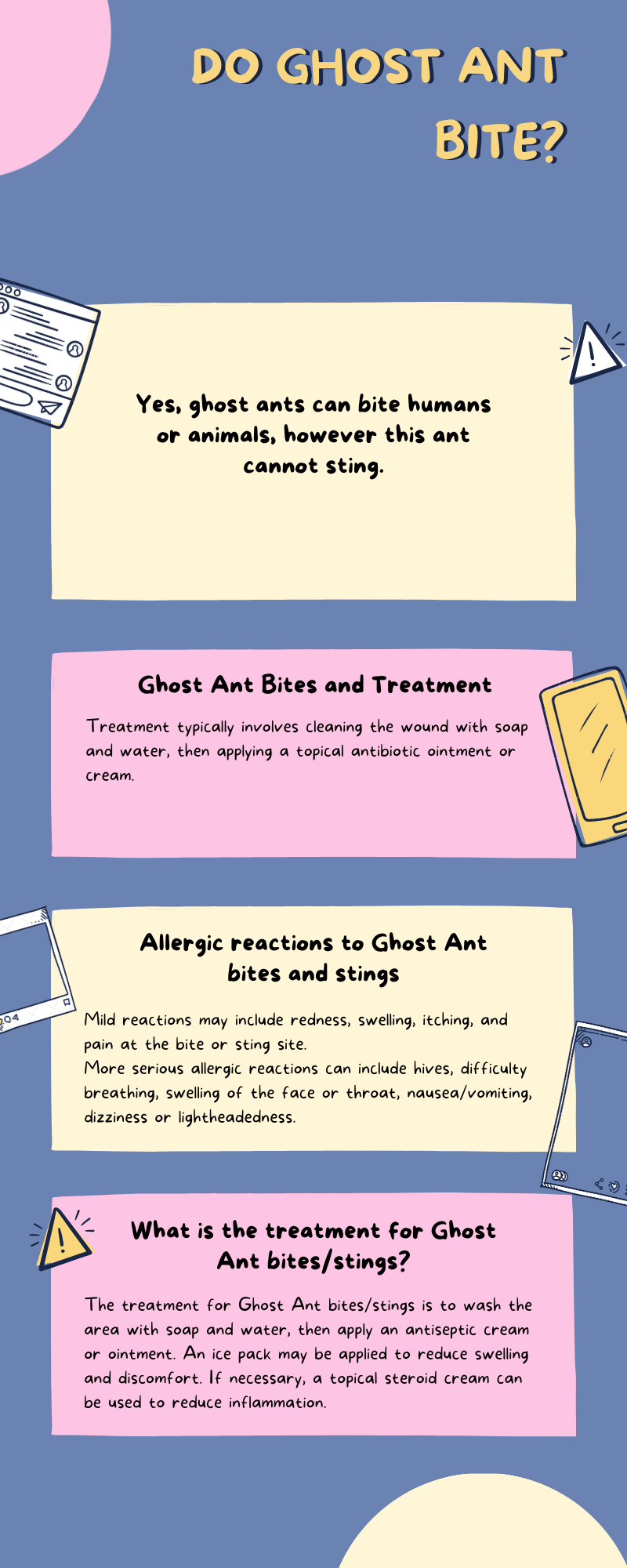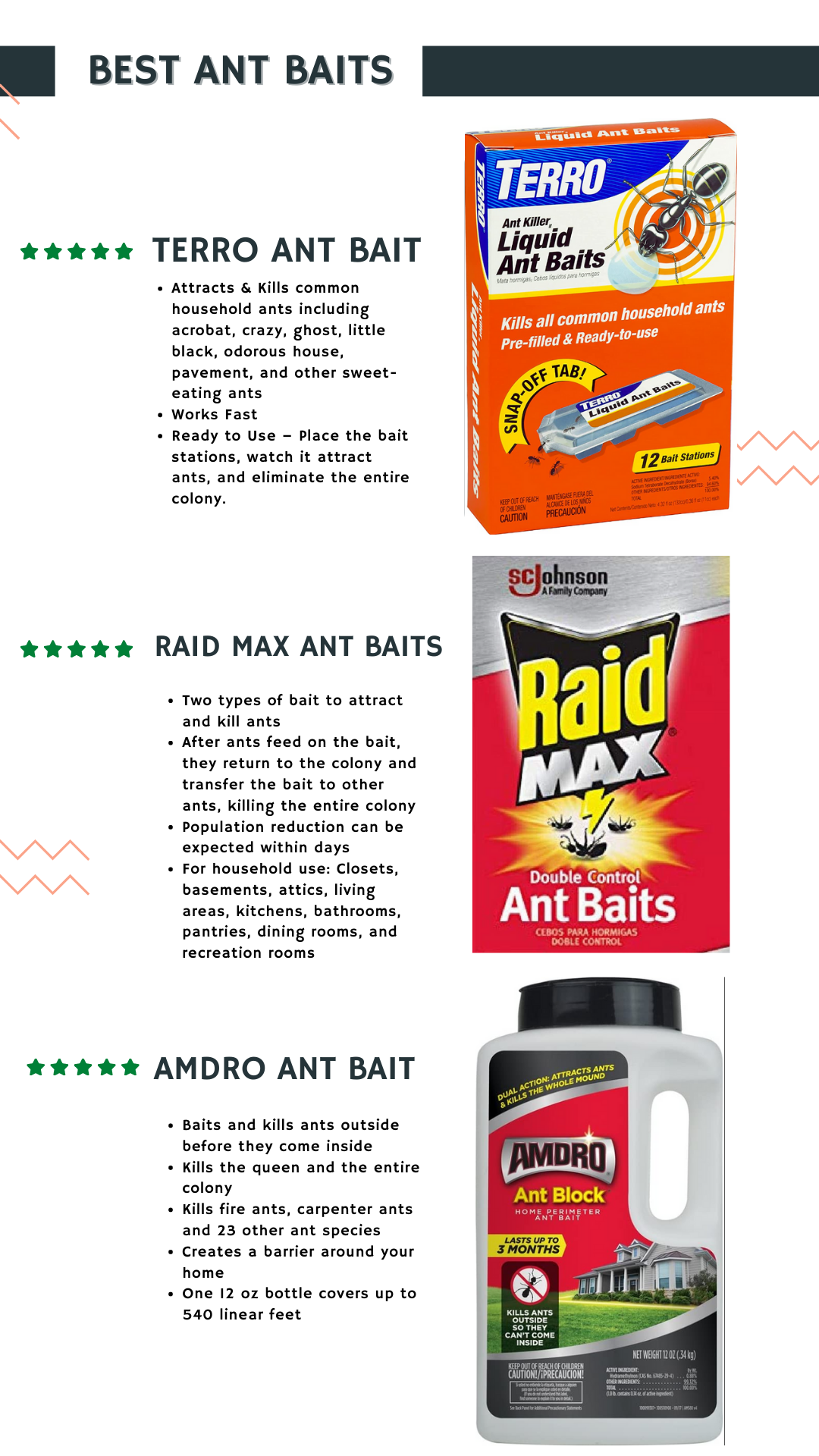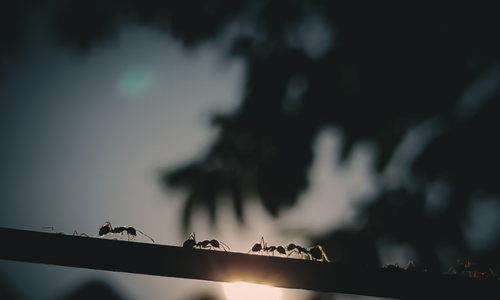Your PERSONAL ANT-CYCLOPEDIA
Ghost Ant (Tapinoma melanocephalum)
Ghost Ant Scientific Classification
Phylum Belonging: Arthropods
Class of Belonging: Insects
Order To Which It Belongs: Hymenoptera
Family In Which It Is Located: Formicidae
Subfamily In Which It Is Located: Dolichoderinae
Genus: Tapinoma
Species: Tapinoma melanocephalum

Post Audio Ghost Ant 1
Have you ever stumbled upon a tiny ant that seems to disappear into thin air? Well, it’s not your imagination – meet the Ghost Ant! The elusive Tapinoma melanocephalum is one of the most intriguing and pesky insects out there.
Tiny in size but mighty in its impact, this ghostly little creature can wreak havoc in your home. But fear not, we’ve got everything you need to know about these fascinating miniature ghosts.
Ghost Ant Anatomy Identification
“Pest Stats”
| Color | White Pale Color |
| Legs | 6 legs |
| Shape | Head and thorax are a deep dark brown with gaster and legs opaque or milky white |
| Size | Extremely small, 1.3 to 1.5 mm long, and monomorphic (one-sized) |
| Antennae | They have 12-segmented antennae. |
| Region | Was common in central and southern Florida and had been elevated to major pest status |
What do Ghost Ant Look Like?
Ghost ants are small (1.3 to 1.5 mm long), with a translucent body and legs, giving them a “ghostly” appearance. Their bodies have an iridescent sheen and they can range in color from pale yellowish-white to dark brownish-black.
Description And Adaptation.
The ghost ant, Tapinoma melanocephalum, is a species of small ant found in tropical and semi-tropical regions.
While they may occasionally be found in homes, they are more often seen outdoors in areas with moist soil such as gardens or near sources of water like ponds or streams.
Ghost ants feed on other insects and sugary substances such as honeydew secreted by aphids and other plant sap-sucking insects.
Geographical distribution
(Tapinoma melanocephalum) is native to parts of Asia and Africa, but it has been introduced in many other areas around the world due to human activity. It can now be found throughout
- North America,
- Europe,
- Australia,
- New Zealand
- And some Pacific islands.
Ghost Ant Distribution Map In Us
In the US it can be found in most states south of a line running from Pennsylvania through Missouri down to northern Texas and Louisiana.
Ghost Ant Arizona
Ghost ants florida
Ghost ants hawaii
Ghost ants texas
Ghost Ant Distribution By Country
Ghost Ant Australia
Ghost ants Dubai



Join The Ant Farming Club!
If you are looking for an Ant Farm and you don’t know which one to choose, or on the other hand you already have your first ant farm, but you don’t know how to grow your colony, take care of it or feed it. Here we offer you the best tips and products to make your colony grow healthy and strong.
In the next section, you will also find advice from professionals to choose the best products on the market such as:
- Luminous Gel
- Ant Farm Sand
- LED light
- Live Ants
- Full Ant Farm Kits For Kids
Ant Farming Club is perfect for kids wanting their first ant farm or schoolteachers wanting to show their students the biology of ants in a natural habitat.
Join
Join and learn all about the world of ants and ant farming.
Products & Discounts
Find discounts and advice from professionals about the best products on the market in 2022.
Meet
Connect with people who are passionate about the world of entomology.
Do Ghost Ant Bite?
Yes, ghost ants can bite humans or animals, however this ant cannot sting.
Ghost Ant Bites and Treatment
As mentioned, Ghost ants cannot sting. For this reason there is no treatment for ghost ant bites, however they may cause itching and mild swelling. In rare cases, an allergic reaction to a ghost ant bite can occur.
Treatment typically involves cleaning the wound with soap and water, then applying a topical antibiotic ointment or cream.
Over-the-counter antihistamines or corticosteroid creams may be helpful to reduce inflammation and relieve itchiness. If an allergic reaction occurs, seek medical attention immediately.
Allergic reactions to Ghost Ant bites and stings
In case you are allergic to ants, allergic reactions to Ghost Ant bites and stings can range from mild skin irritation to severe anaphylaxis.
Mild reactions may include redness, swelling, itching, and pain at the bite or sting site.
More serious allergic reactions can include hives, difficulty breathing, swelling of the face or throat, nausea/vomiting, dizziness or lightheadedness.
In extreme cases, anaphylaxis can occur which requires immediate medical attention.
What is the treatment for Ghost Ant bites/stings?
The treatment for Ghost Ant bites/stings is to wash the area with soap and water, then apply an antiseptic cream or ointment. An ice pack may be applied to reduce swelling and discomfort. If necessary, a topical steroid cream can be used to reduce inflammation.
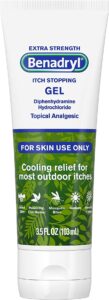
About this item
- Benadryl Extra-Strength Anti-Itch Gel temporarily relieves pain and itching associated with insect bites, minor burns, sunburn, minor skin irritations and rashes due to poison ivy, poison oak and poison sumac.
- Topical analgesic gel provides cooling, anti-itch relief from most minor pains and outdoor itches associated with insect bites.
- The cooling gel provides the relief of pain and itching associated with insect bites.

More Immediate Allergic Treatment management:
1. Provide antihistamines for symptomatic relief orally or parenterally depending on severity and availability of resources in consult with a medical professional.
2. Other medications may be indicated including corticosteroids, bronchodilators (albuterol), oxygen therapy, intravenous fluids or respiratory support depending on symptoms and severity of reaction
3. Monitor vital signs and watch for delayed reactions that may occur several hours after initial exposure/reaction
Long-term Treatment management:
1. Monitor population size: Monitor the population size in your garden or yard regularly to ensure that control measures are working and have not caused a rebound of the ant population. Consider using ghost ant bait traps, sticky barriers, or baited stakes to collect information about where the ants may be nesting.
2. Physical Barrier: Ghost ant tapicoma melanophalum can easily move through small gaps in buildings, such as around door frames or window sills. Use caulk or other sealants to fill any cracks or crevices that could provide entry points for these ants into your home.
3. Insecticides: Indoor insecticide sprays can be used to target ghost ant colonies indoors and outdoors if needed. If you choose this option, be sure to use an insecticide labeled specifically for controlling indoor ghost ants and follow all label instructions carefully when applying it inside your home. Outdoors, spot treatments with an appropriate insecticide formulation can also help reduce local populations of these pests on patios and near entranceways into homes or other structures they may inhabit nearby..
4. Natural Predators & Parasites: Predatory insects such as parasitic wasps can feed on ghost ant workers within their own colony and disrupt normal functioning by reducing worker numbers which limits colony growth potential over time; however natural controls like this need careful consideration before release due to potentially negative impacts on desirable native species too! Additionally some fungi species have been identified as being effective at killing certain populations of ghost ants so exploring biological control options first is often recommended prior turning towards synthetic chemical solutions – even then always read labels before using any type product just in case there’s something else living locally that might get inadvertently affected should those products not select only targeting the intended pest!.

About this item
- Benadryl Extra-Strength Anti-Itch Gel temporarily relieves pain and itching associated with insect bites, minor burns, sunburn, minor skin irritations and rashes due to poison ivy, poison oak and poison sumac.
- Topical analgesic gel provides cooling, anti-itch relief from most minor pains and outdoor itches associated with insect bites.
- The cooling gel provides the relief of pain and itching associated with insect bites.

YOU CAN ALSO LISTEN HERE!
Post Audio Ghost Ant 2

Natural Behavior And Diet Ghost Ant
The natural behavior of ghost ants is to live and forage in large colonies.
They typically nest outdoors in areas with plenty of moisture, such as rotting wood or under stones.
Ghost ants prefer sweet foods, but they will also feed on other food sources when necessary.
They are an aggressive species and will defend their nests vigorously against intruders. In the wild, ghost ants primarily eat nectar from flowers and honeydew secreted by plant-sucking insects like aphids. As scavengers, they have been known to feed on dead insects or animal carcasses as well.

Funny Fact About Ghost Ant
Moving The Nest!

Did you know that the ghost ant, also known as Tapinoma melanocephalum, has adapted to living in various environments around the world. They are called “ghost” ants because they are so small and their translucent bodies make them almost invisible to the naked eye. But here’s where it gets even more interesting: Ghost ants can actually move their nests every few days if necessary!
This is an incredible feat considering how small they are. These little critters can pack up everything they need and move to another location without missing a beat.
So next time you come across these fascinating creatures, remember that there’s always something new and exciting to learn about nature- especially when it comes to ghost ants!
Ghost Ant Photos And Pictures

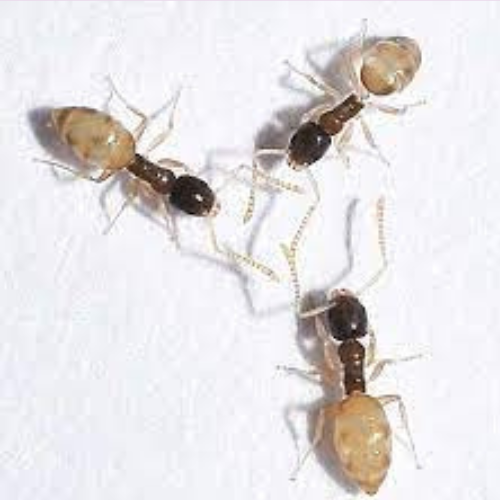
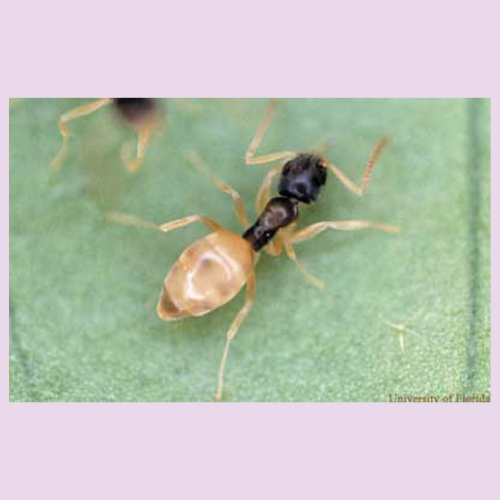
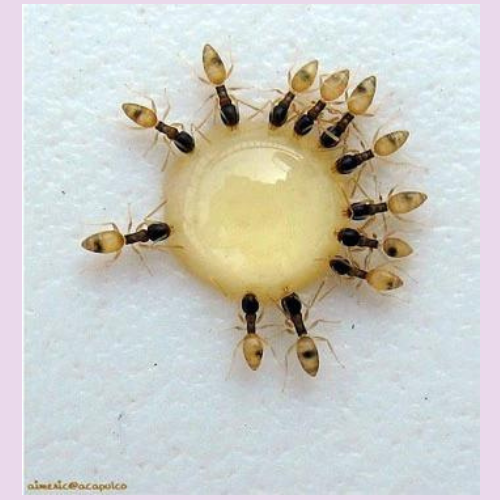
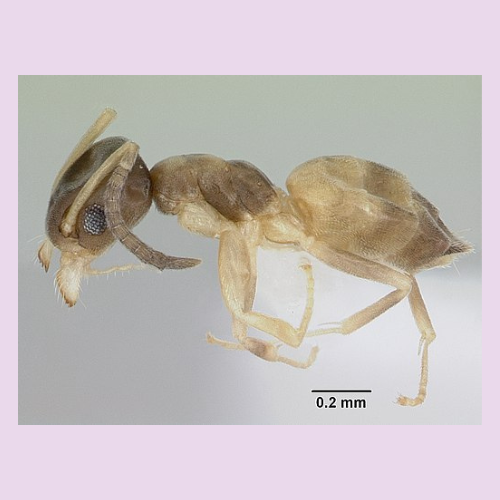
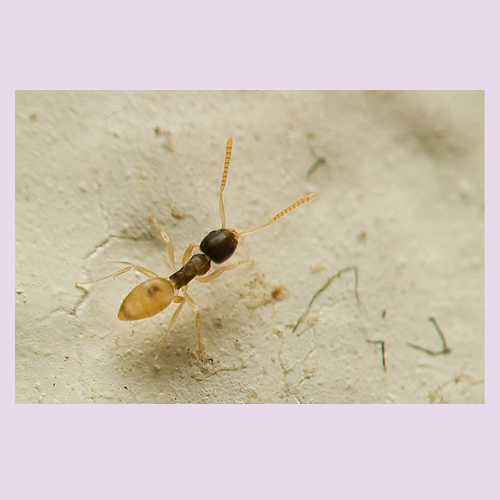

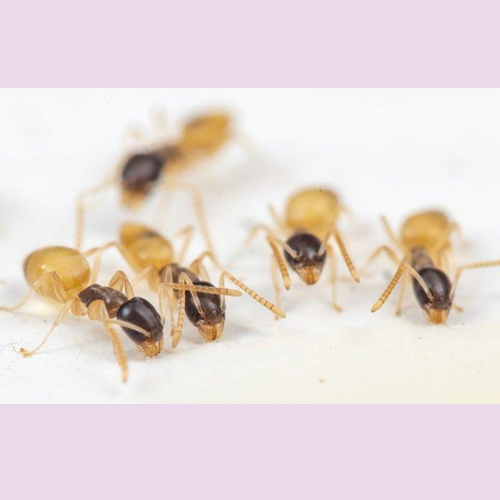
Seasonal Colony Trends [All You Should know]
Ghost Ant Reproduction Characteristics (Reproductive Biology)
They are one of the most common ant species found in seasonal colonies.
They reproduce asexually via parthenogenesis, which means that they produce offspring without the need for fertilization.
Ghost ants tend to have multiple queens in each colony, and these queens are responsible for providing ample resources for their workers and eggs. The presence of multiple queens has been linked with increased reproductive success in ghost ants.
In addition, ghost ant colonies become more populous during certain times of year when conditions are favorable (e.g., warm weather). This is due to higher levels of food availability as well as an increase in egg production by the queen(s) during these periods.
Foraging Habits
Ghost ants prefer to feed on sweet substances such as honeydew produced by aphids or juice from fruits like berries and melons. They also scavenge dead insects and will occasionally feed on small pieces of meat or other proteins if available.
These opportunistic behaviors allow them to take advantage of whatever nutrition sources may be present at any given time! Furthermore, ghost ant colonies often form “foraging trails” wherein individuals leave a scent trail leading back to their nest so that other scouts can easily find food sources quickly without having to search blindly throughout an area.
Mating Behaviors
The mating behavior of Ghost Ants is largely unknown, but it appears that females do not mate outside their own colony due to strong nestmate recognition abilities within this species (i.e., they recognize individuals from their own nest better than those from foreign nests).
It is believed that males may use pheromones or chemical cues released by potential mates when searching for partners; however, details regarding this process remain unclear at this time!
Impact
The ghost ant is an invasive species of ant that has spread to many parts of the world. The presence of this insect can have both environmental and human impacts.
Environmental Impact: Ghost ants are known to out-compete native ants for food, nesting sites and other resources which can have negative impacts on native ecosystems.
In addition, their nests can displace soil which may result in habitat degradation. They also will feed on crops, so infestations near farmlands or gardens could lead to decreased crop yields or damage to agricultural products.
Human Impact: Ghost ants pose a nuisance as they enter homes looking for food or moisture and often create large mounds outside homes where they nest. These mounds make it difficult for people to walk around them, causing inconvenience and possible property damage if the mound becomes too large.
Additionally, when disturbed these ants will bite humans causing minor irritation but possibly allergic reactions in some cases.
YOU CAN ALSO LISTEN HERE!
Post Audio Ghost Ant 3


Ghost Ant Education (Ghost Ant Life Cycle)
Habits
The life cycle of a ghost ant begins with eggs, which hatch into larvae.
The larvae (baby ghost ant) feed and grow until they become pupae, at which point they cease to eat and enter the cocoon stage. After several weeks in the cocoon, adult ants emerge fully grown.
Ghost ants are monogynic: each colony has only one queen who is responsible for laying all of the eggs that produce new workers and reproductives (queens and males).
These winged males and queens leave their mother colony to mate, after which time the male will die while female reproductives return to establish their own colonies. This process is known as swarming or budding. Once established in a new location, ghost ant colonies reproduce rapidly by producing hundreds of new worker ants from her eggs every week.
Ghost ants typically live outdoors but can also infest homes if suitable conditions exist such as damp soil around foundations or other food sources close by like garbage cans or pet food dishes left out overnight.
To control them indoors it is important to remove any potential nesting sites – seal up cracks around windows, doors frames etc., eliminate moisture sources like leaky pipes/faucets – then use an insecticide specifically labeled for use on ghost ants along with baits.
Ghost Ant Habitat
They typically inhabit warm, humid climates and need a habitat that is well-protected from the elements.
They live in cracks and crevices around windows and doors, as well as behind walls or baseboards in homes.
Outdoors, they can be found beneath stones, logs, debris piles or protected areas of vegetation.
Ghost ants prefer to nest outdoors but may enter buildings if their natural habitats become unsuitable due to climate changes or human disruption.
Environmental Requirements
1. Temperature: The ideal temperature for ghost ants is between 22–25 degrees Celsius (71-77 degrees Fahrenheit).
2. Humidity: Ghost ants prefer a relative humidity of 70-80%.
3. Light: Ghost ants need indirect or diffuse light, but they should not be exposed to direct sunlight, as this can cause the colony to overheat and die off.
4. Substrate/Soil Type: Ghost ants do best in sandy soil with some organic matter mixed in for nutrition, such as compost or mulch. For colonies kept in captivity, potting soil with sand added is often sufficient.
5. Nesting Sites: In their natural environment, ghost ants construct nests beneath stones and logs or even inside hollowed out tree trunks and stumps; when kept in captivity they may use similar nesting sites if provided with them by the keeper—otherwise they will build small mounds near the entrance of their enclosure which will provide enough space for their needs while still protecting them from predators or environmental changes that could threaten the colony’s health.
Ghost Ant Queens
Ghost ants are a species of small ants native to tropical and subtropical climates.
They live in colonies that can range from several hundred to thousands of individuals, depending on the size of their habitat.
They typically nest in moist soil or other places with high humidity, such as under rocks and logs, or inside walls and ceiling voids.
They often establish multiple nests throughout their environment. Colonies are led by an egg-laying queen who is supported by worker ants that forage for food and care for the larvae.
The female worker ants do most of the foraging, digging, and nest building while males serve only as drones for mating purposes.
Queens can live up to 20 years and lay thousands of eggs.
As they age, queens become less efficient at reproducing, leading to smaller colony sizes over time.
Do ghost ants like light?
Ghost ants do not like light and prefer to live in dark, moist places. In fact, they often create trails that lead away from light sources such as windows or other areas of direct sunlight.
The Best Products 2023
Formicarium
Formicarium
Ant Farm
Ecosystem
Entomology supplies
Test Tube Packs
Pipettes
Feeding Dishes
Ant Foods
Ant Nectar
Feeders
Eco-Fresh Rice Worms
Fly Larvae
Kits
Terrarios
Nest Kit
Ant Farm Sand
Ant Farm Neon Gel
Wanna learn more about Ants? Join an Online Community of more than 1000 Readers Around the Country.
Here you can sign in to our newsletter to receive daily emails with funny facts, interesting details about ants, step-by-step tutorials, and even good practices to have a healthy ant farm colony. We’ll be more than happy to have you in…

How to Get Rid of Ghost Ants? (How To Keep Ghost Ants Away?)
1 – First Step: Ghost Ant Pest Prevention & Control
1. Eliminating entry points: Inspect your home for potential ant entry points and seal them with caulk, silicone or other appropriate materials.
Pay particular attention to cracks and crevices near pipes, windows, doors, and electrical lines.
2. Removing food sources: Ants need a steady food source in order to survive. Storing food in sealed containers will make it difficult for them to access it as well as prevent new colonies from setting up shop in your home or yard. Be sure to regularly clean up crumbs, spills and garbage around the house so that there is no easy-to-find food source available for ants.
3. Keeping things dry: Moisture attracts ants so be sure to fix any leaking fixtures or faucets both inside and outside of the house immediately upon discovery as well as keep gutters free from debris that can create areas where moisture can accumulate easily close by a building’s foundation.
2 – Second Step: Natural Methods To get rid of Ghost Ant
4. Utilizing natural pest control methods: If you are looking for an eco-friendly way of controlling pests like ants then consider using peppermint oil spray which has been proven effective against many species of common household bugs including ghost ants (Tapinoma melanocephalum).
Outdoor And Indoor Organic Pest Control Products
Diatomaceous Earth
Diatomaceous Earth is a naturally occurring soft sedimentary rock that has been ground down to a fine white powder.
This powder damages the exoskeleton of insects, so it acts as a barrier that Ghost ants won’t cross.
If you have potted plants on a shelf, you can put a small amount of diatomaceous earth down by the legs of the shelf, preventing ants from getting up onto the plants.
These barriers can be put virtually anywhere, both indoors and outdoors.
While Diatomaceous earth is safe for humans to handle and even eat, it does create fine dust that should not be inhaled.
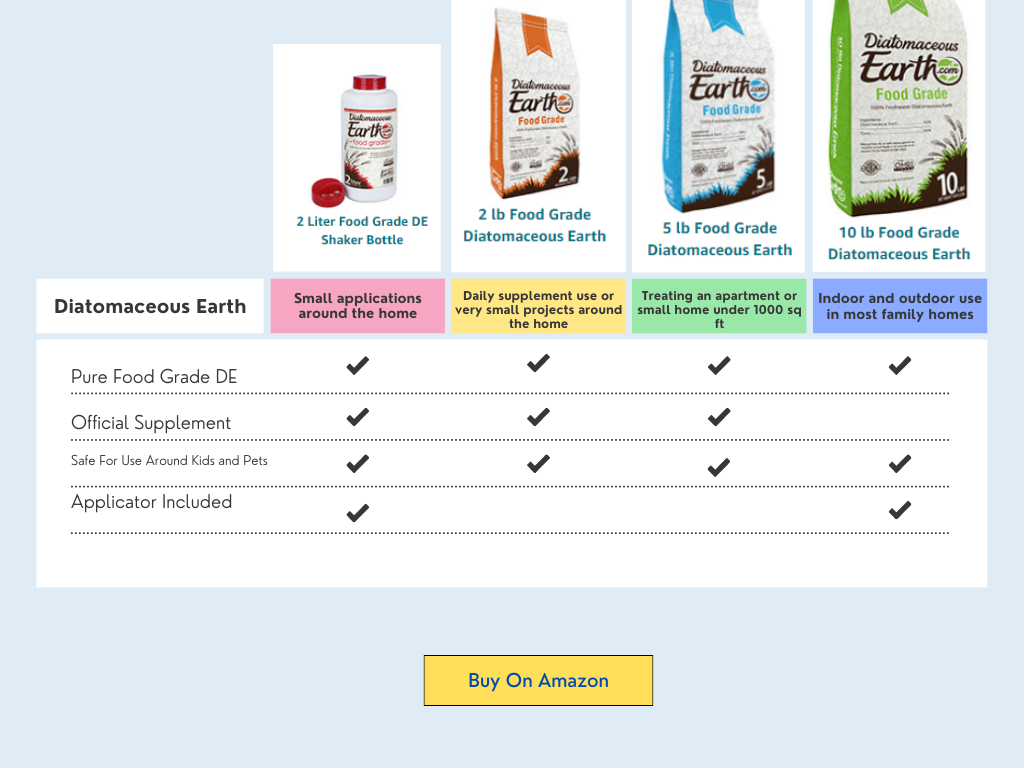
PROS About Diatomaceous Earth
Among its most striking advantages is the low risk to the health of people, children, and pets, as well as the residual years that this compound can have in our home, providing extra protection against pests. This material is not recommended for use on carpets or floors that you would vacuum.
CONS About Diatomaceous Earth
Although this product represents a non-chemical solution to avoid chemical pesticides. This powder can have some drawbacks. An example of this is that insects need to have direct contact with the material, as well as prolonged contact for it to have a greater effect. This means, that if we decide to use this. We must distribute it throughout our home in large quantities. On the other hand, Diatomaceous Earth must be kept dry, so it is not a good idea if we want to use it in our gardens that are damp from irrigation.
Despite its low toxicity. This material could not be used to kill ants if it did not have some level of danger to the health of insects, so the use of dust masks is recommended, as well as applying it in ventilated areas since this dust could cling to the mucous membranes of the nose and mouth. Also, the dust could fly and generate allergies if we apply it in places where there are fans or air conditioning.
Boric Acid
Boric Acid is a type of Acid found in many naturally occurring minerals, such as borax. Borax is found in many cleaning products, including some types of toothpaste.
Boric Acid has a very low toxicity level for mammals but not for ants. It interferes with their digestive system and slowly terminates them.
The trick is to keep the level of boric Acid low enough so that it travels through the colony and makes it to the queens and young before killing the ants.
I will give you a personal recommendation of a product that is currently on the market called Terro. This contains borax, and I found it effective against Ghost ants.
You can also find recipes online to make your own bait at home using borax. (Here are the steps if you are interested)
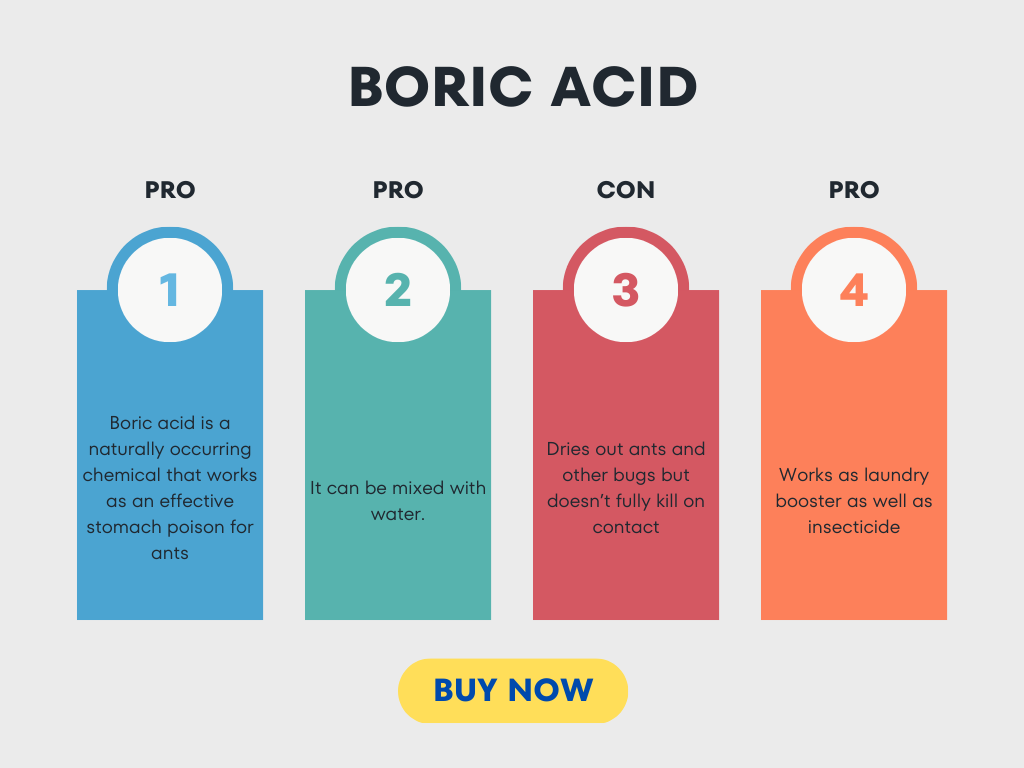
PROS About Boric Acid
This product dissolves easily in water, which allows us significant savings. On the other hand, it is more granular than powder. Which makes it less likely that we will inhale it by mistake.
It is useful for other types of pests, such as cockroaches.
CONS About Boric Acid
In very humid climates, if not stored properly, it can become damp and ruined. Therefore, it is recommended to store the mixture in a gallon Ziploc bag to keep it dry and protected when not in use.
Essential oils
Ghost ants communicate with each other using pheromones. A forager that finds food marks a trail on the way back to the colony. This scent trail is followed by other ants, and these ants then reinforce the trail when they head back to the colony with food.
Pheromones also help ants tell each other apart, warn each other of danger and communicate all sorts of messages we’re only beginning to understand.
Most essential oils have a very strong fragrance. We can use this strong fragrance to mask pheromone trails and disrupt the coordination of ants. This method, in addition to being very efficient, allows you to drive away the ants in a natural way without causing them harm.
Essential oils can be added to soapy water that can be used to clean pots and shelves where we keep cacti and succulents. This will mask any previous messages ants left behind to tell other ants… HEY! There is a good food source, water, or shelter.
My Favorite essential oils to use for ants are:
- Peppermint
- Cedarwood
- Lemongrass and
- Clover
However, there is a high range of essential oils that we can use to keep ants away from our homes. Below we offer you a select list of the most efficient oils with the best results on the market.
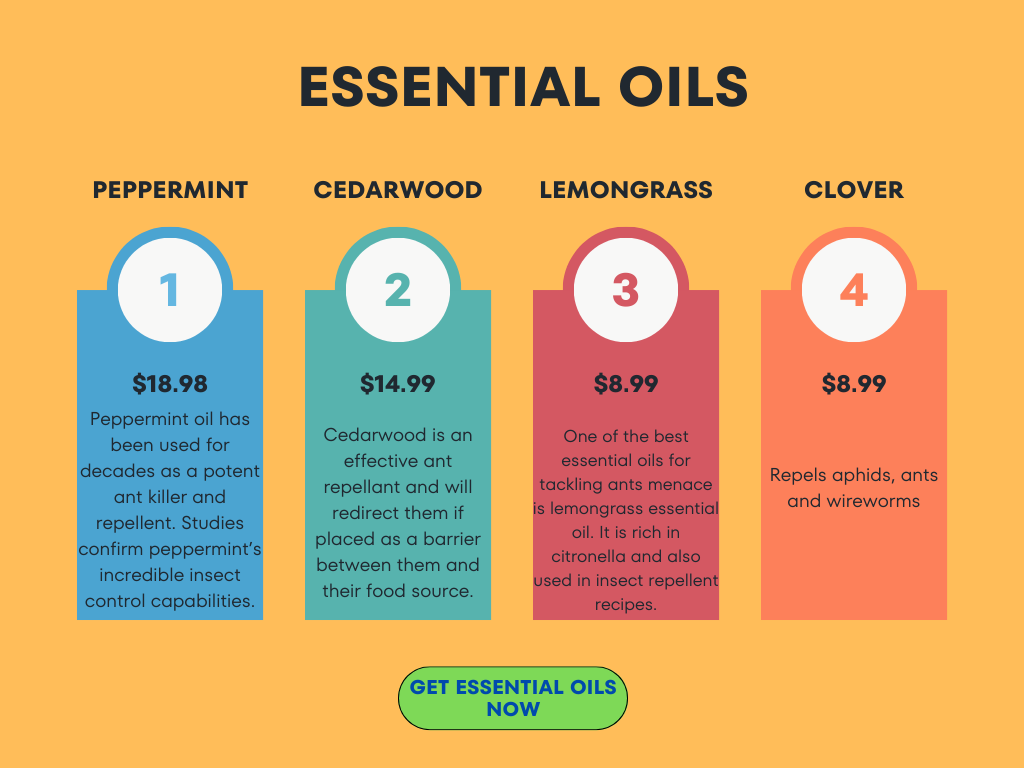
Pros About Essential Oils
These essential oils represent rapid elimination and residual repellency. which means many months of additional protection.
On the other hand, this represents a highly respectful pest control with our environment.
In the case of living with other beneficial insects for us, such as bees or other pest-control insects. These represent minimal risk.
Finally, as we all know. Essential oils offer us a natural and pleasant fragrance for our home.
Cons About Essential Oils
Essential oils are very useful for many purposes despite their effectiveness in pest control. We may need large amounts to eradicate large ant colonies. Essential oils are expensive, so it can cost us a few dollars to completely eradicate an ant colony.
3 – Third Step: Insecticides and Ant Baits To Control Ghost Ant (Best Ghost Ant Killer)
Best Ant Bait For Ghost Ant
- Baits (protein/fat-based baits).
- Honeydew Aphid Baits
- nectar baits
- Plant product baits as well as sugary carbohydrates.
Ghost Ant Control Using Insecticides
1. Spray insecticides labeled specifically for ghost ant control along baseboards, windowsills, door frames and other areas where they may be accessing the building from outdoors. For best results use both a dust and liquid form of insecticide containing permethrin or bifenthrin. Repeat applications every two weeks until no more ghost ants are seen within your residence area or commercial property areas (i).
2. Apply baits containing active ingredients like fipronil indoors near entry points of Ghost Ants as well as on their trails which will help you get rid of them completely from your premises (ii). 5 .Apply sticky traps at various locations throughout the infested area so you can monitor how effective pest management efforts have been(iii). This way if there is another outbreak you’ll know what steps need to be taken next for complete eradication!
Pesticide
Ghost Ant Control Using Pesticides
Common products used to control ghost ants include insecticidal sprays, dusts and baits.
When applying these products it is important to read and follow all manufacturer’s instructions carefully so as to ensure the most effective results possible.
Additionally, when using a spray or dust product make sure that you treat any cracks or crevices where ants may be entering your home as well as any visible trails they are following. Finally, reapply the treatment regularly according to directions until all signs of infestation are eliminated.
Subfamilies Of Ants
View More
View More
Ant SubFamily Group 3
View More

Did You Know That…
The ghost ant is one of the world’s smallest ants, measuring just 2 millimeters in length. It is native to tropical and subtropical regions worldwide but has spread to temperate climates through human activities.
Ghost Ant Changing Color
Some ant species, such as the notorious ghost ant (Tapinoma melanocephalum), can change color. This is due to a specialized layer in their exoskeleton called the chromatophore, which comprises several different pigments. These can be activated by hormones released when the ants feel threatened or stressed, causing them to darken and stand out more easily against darker surfaces.
YOU CAN ALSO LISTEN HERE!
Post Audio Ghost Ant 4
How to Raise a Ghost Ant Colony? The Ultimate Guide
If you’re looking for a unique and exciting way to delve into the world of ant keeping, raising a ghost ant colony might just be the perfect adventure for you!
These tiny, translucent ants are fascinating creatures that offer an intriguing glimpse into the intricacies of nature. But where do you begin? In this article, we’ll guide you through everything you need to know about starting and maintaining your very own ghost ant colony.
Get ready to experience one of nature’s most captivating wonders!
How to get a Ghost queen ant?
Ghost queen ants can be found in tropical and subtropical regions, usually nesting in dead wood or leaf litter on the forest floor.
Unfortunately, these ants are not available commercially and cannot be purchased online or through pet stores.
To obtain a ghost queen ant, you will need to find an experienced ant breeder who specializes in this rare species, or capture one yourself during a trip to its natural habitat.
How to identify a Ghost queen ant?
A Ghost Queen Ant can be identified by its size, colour and antennae.
A Ghost Queen is much larger than a regular worker ant, often up to twice their size or more. While the colour of a worker ant may vary from species to species, a Ghost Queen will typically have an entirely white or pale yellow body with no other markings.
Additionally, they have large elbowed antennae that are longer than those of a regular worker ant.
Time for a Ghost queen ant to start a new colony
It depends on the species of ghost queen ant, but generally it takes about one to two months for a new colony to form.
Chapter 1: Getting Started in Ghost Ant Keeping!
1. Gather your materials: You will need an ant farm, some ant food, a small container of water and some dirt or sand for the foundation of your colony’s habitat.
2. Set up the environment: Place your ant farm in a location where it can receive enough natural light and heat to promote growth but not too much that it becomes uncomfortable for the ants. Make sure there are no insecticides or other harmful substances in the area as well.
3. Introduce your ghost ants: Once you have acquired both queen and worker ghost ants (or just workers if another queen is not available), add them to their new home by slowly lowering them into the habitat using tweezers or other similar tools. Be careful when doing this so you don’t injure any of them!
4. Test out living conditions: Monitor how they react to different temperatures, humidity levels and types of food — adjust accordingly depending on what works best for them until you reach optimal living situations for all members of your colony! This may require experimentation with trial-and-error over time to get right . . Lastly, provide fresh water every few days – make sure it isn’t too deep otherwise they might drown! Don’t forget that ghost ants love sugar so be sure to offer a sugary treat occasionally as well such as fruit juice or honeydew melon cubes mixed with sugar water/ syrup/etc.
5 Monitor activity regularly: Make sure you check up on their progress periodically throughout each week – observe changes in behavior while also looking out for signs of pest infestations either inside or outside their enclosure; do whatever necessary treatments if required! Finally take note when eggs start developing since this indicates successful breeding which should be encouraged by providing more nutrients in form !
Conclusion
Raising a ghost ant colony can be an enjoyable and rewarding experience. Not only does it give you the satisfaction of caring for something living, but it also allows you to observe these fascinating creatures in their natural habitat.
While there is some work involved in setting up the colony, once everything is established, all that’s left to do is watch them go about their daily activities with fascination!
We hope you can enjoy now your new Ghost Ant Farm.


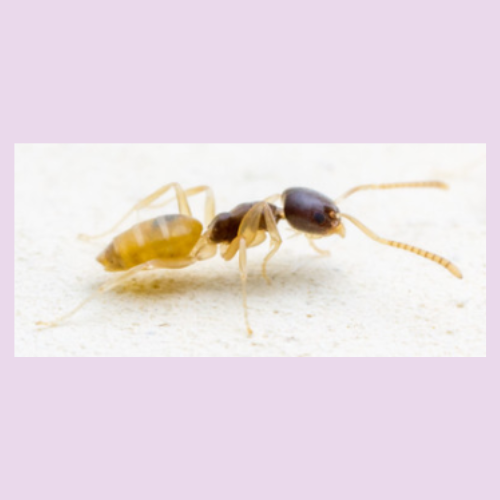


The Best Products 2023
Formicarium
Formicarium
Ant Farm
Ecosystem
Entomology supplies
Test Tube Packs
Pipettes
Feeding Dishes
Ant Foods
Ant Nectar
Feeders
Eco-Fresh Rice Worms
Fly Larvae
Kits
Terrarios
Nest Kit
Ant Farm Sand
Ant Farm Neon Gel
Ant Farm Ecosystems
| Ant Farm For Classroom | Light-up Ant Habitat |
| Ant House With Feeding Area | Wall Hanging Ant Farm |
| An ecosystem with live ants | Ant farm for Preschool |
| Pet Anthill Ant House | Nest Insect Castle |
| Glow In The Dark Ant Farm | Aquariums For Ants |
| Ant Farm With Instructions | Ant Farm With Queen |
| LED Ant Farm for Live Ants | Connectable Ant Farm |
| Ant Farm For Kids | New Large Plaster Ant Farm |
| Pocket colony | Ant Farm With Queen |
Ant Farm Supplies
| Feeder | Feeding Area |
| Tunneling sand | Tunnel starter tool |
| Ecological Ant farm gel | Ants farming aphids |
| Nutrition and Care | Ants farming mushrooms |
| Ecological blue gel | Fungus for ant farms |
| Handcrafted Wood | Ant habitats |
| Ant Plastic Tubes | Ant Glass Tubes |
| Food for ants | Ant Farm Nectar |
| Ant Farm Live Insects | More Supplies |
Live Ants For Sale
| Live Ants | Best ant species |
| Coolest Ants To Keep | Interesting Ants |
| Fungus-farming ants | Exotic ants |
| Big Ants | Buy Queen Ant |
| Buy Worker Ants | Buy Soldier Ants |
| Domestic ants | Fungus farming ants |

